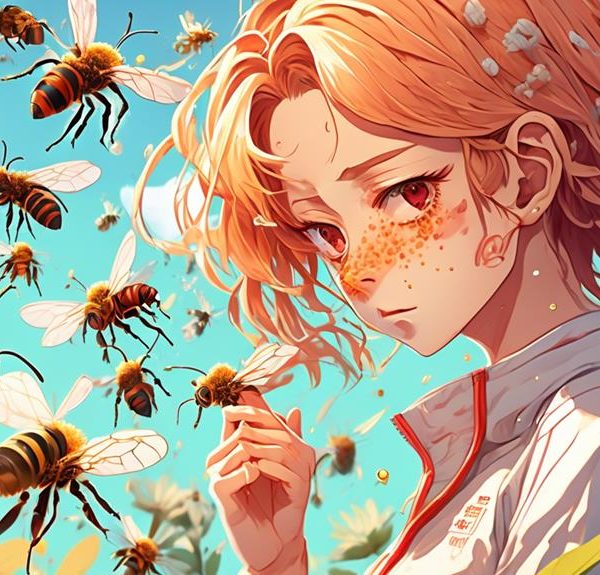Marvel at the unexpected yet vital role sweat bees play in flower pollination, a fascinating secret of nature revealed.
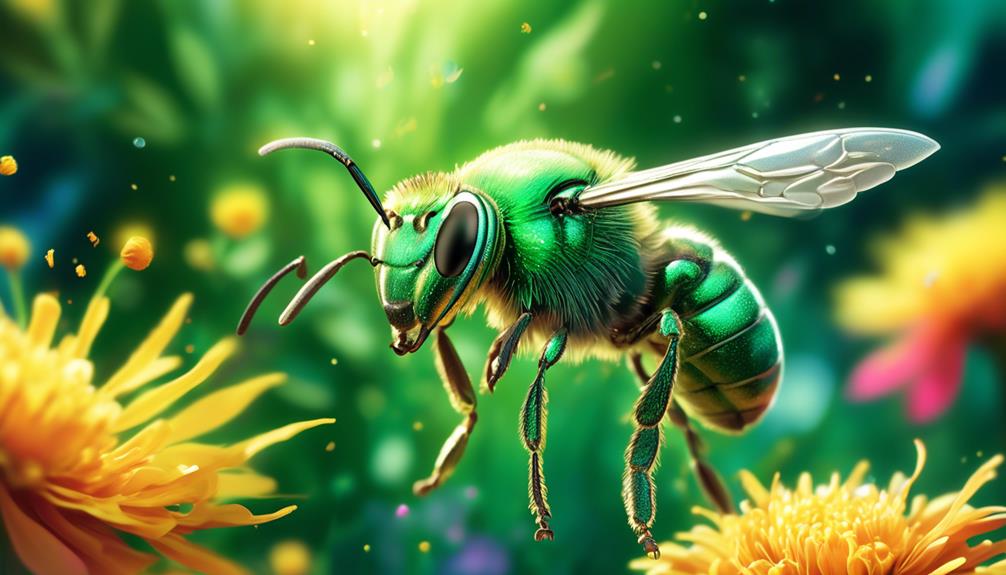
Do Sweat Bees Pollinate Flowers
Did you know that there are over 1000 species of sweat bees in North America alone? As a gardening enthusiast or a nature lover, you might have noticed these tiny, often metallic-colored insects buzzing around your flowerbeds.
While they're infamous for their attraction to human sweat, which is where they get their name, you might wonder if these bees play any role in pollination.
Well, here's a hint; their interaction with flowers is more significant than you might suspect. Stay tuned to uncover the fascinating relationship between sweat bees and flowers.
Key Takeaways
- Sweat bees are important pollinators, playing a crucial role in maintaining biodiversity.
- They collect pollen while sipping nectar, unintentionally transferring it to other flowers and enabling fertilization.
- Sweat bees are attracted to flowers based on their color and scent.
- Supporting the health of sweat bees benefits other animals that rely on the fruits and seeds produced by pollinated plants.
Understanding Sweat Bees
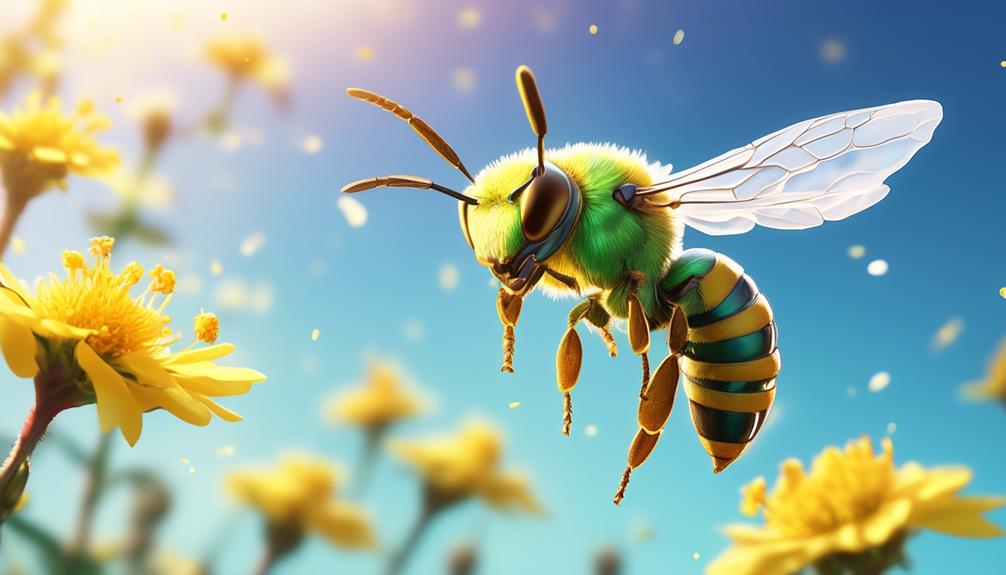
You mightn't realize it, but sweat bees play a crucial role in our ecosystem. They're one of nature's best pollinators, and they're often overlooked. Just like honey bees, they transfer pollen from male to female flowers, ensuring the next generation of plants.
Now you're probably wondering, why are they called sweat bees? It's because they're attracted to human sweat. Don't worry, though, they're not aggressive. They're usually drawn to your sweat to quench their thirst, but they'll only sting if threatened. It's actually less painful than a honey bee sting.
There's a massive variety of sweat bees out there. Over 1,000 species exist in the U.S. alone, each with unique habits and appearances. Some are metallic and shiny, others are dull and dark. But they all share one thing: they're solitary creatures. Unlike honey bees that live in colonies, each sweat bee female digs her own underground nest.
Sweat Bees' Diet and Behaviour

While their solitary lifestyle and attraction to sweat are fascinating, it's also intriguing to explore what sweat bees eat and how their dietary habits influence their behavior. Unlike many bee species, sweat bees aren't strictly vegetarians. They consume both plant and animal matter, making them important pollinators and pest controllers.
- Nectar and Pollen: Sweat bees are primarily attracted to flowers for their nectar and pollen, which provide essential nutrients and energy. Their pollination habits make them vital in maintaining biodiversity.
- Insects: Sweat bees, especially their larvae, consume small insects. This carnivorous behavior aids in controlling garden pests.
- Sweat: You're not mistaken; sweat bees do feed on human sweat! They're attracted to the salts and proteins it provides.
- Dead Insects: Some species scavenge on dead insects, an unusual trait in the bee world.
Understanding their diet helps you understand their behavior. Sweat bees are solitary creatures, preferring to live and feed alone. They're also opportunistic, feeding on what's available, which often leads to interaction with humans. So, if you're outdoors and sweating, don't be surprised if a sweat bee pays you a visit!
The Pollination Process
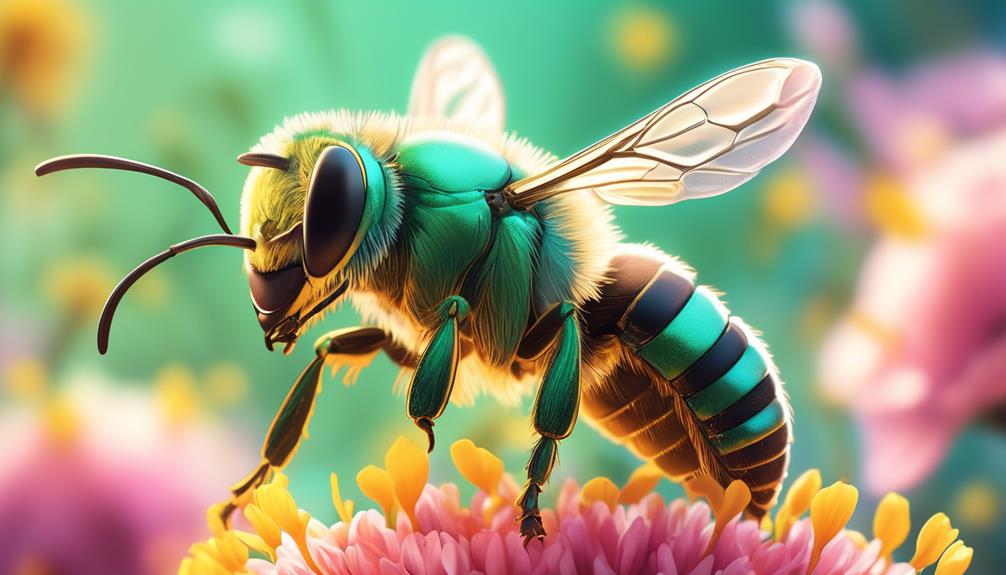
Sweat bees' role in the pollination process is a fascinating dance of nature, underpinning the survival of many plant species. When these tiny creatures buzz around sipping nectar, they unintentionally collect pollen on their fuzzy bodies. As they move from flower to flower, some of this pollen rubs off onto the pistil of the next bloom, resulting in pollination. This is a crucial step for plants to reproduce.
It's an intricate symbiosis that benefits both parties – while the sweat bee gets its nectar meal, the plant gets a chance to procreate. However, not all sweat bees are equally effective pollinators. Some species are more efficient than others, depending on the size, shape, and even color of the flower. It's a delicate balance, requiring the right bee for the right bloom.
Sweat Bees and Flower Interaction

In the early morning light, observe how a sweat bee's interaction with a flower is a complex and nuanced affair, that's both fascinating and essential for our ecosystem. These tiny creatures, often overlooked, play an integral role in pollination, ensuring the survival of many plant species and indirectly, our own food supply.
Here's a simple breakdown of their interaction:
- Attraction: Sweat bees are lured by the flower's color and scent. They're particularly fond of blue, purple, and yellow flowers.
- Landing: Once a sweat bee lands on a flower, it begins to collect nectar and pollen. The bee's body is designed for efficient collection, with hairs that trap pollen.
- Transfer: As the bee moves from flower to flower, it inadvertently transfers pollen, enabling fertilization.
- Reciprocity: The bee gains nutrition from the flower's nectar, while the flower benefits from the bee's pollination. It's a perfect symbiotic relationship.
Impact of Sweat Bees on Ecosystem
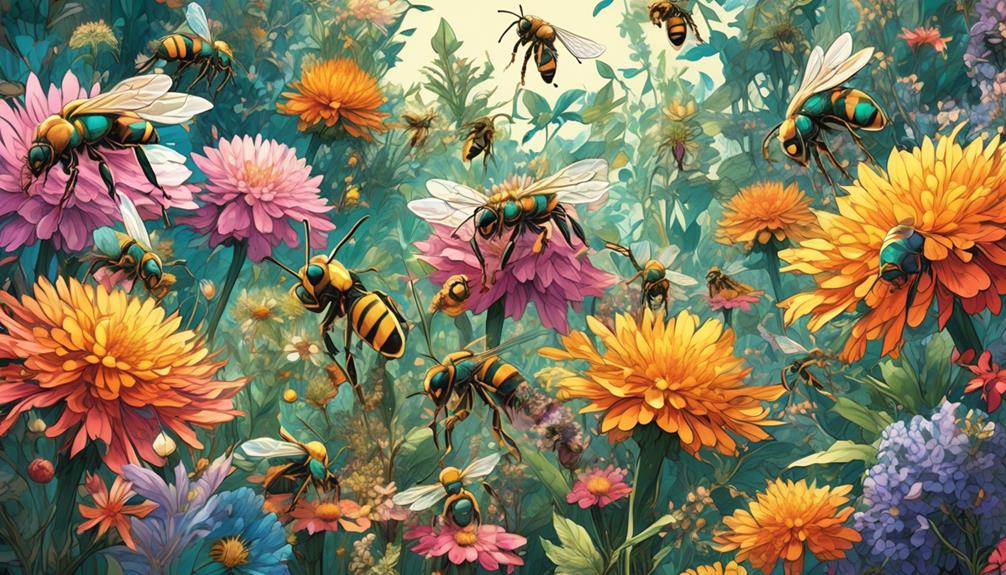
You mightn't realize it, but these tiny sweat bees have a huge impact on our ecosystem. They're not just buzzing around your sweaty skin on a hot day – they're working tirelessly to pollinate a wide variety of plants, including many of the fruits, vegetables, and flowers we enjoy.
Without these hard-working insects, our gardens, parks, and farms would look vastly different. Many plants rely heavily on the pollination services sweat bees provide. They're often more efficient than honeybees, because they visit a larger number of flowers in a day. The healthier and more diverse our plant ecosystems are, the healthier our planet is.
But it's not just the plants that benefit from sweat bees. Other animals, from birds to mammals, rely on the fruits and seeds these pollinated plants produce. So, by supporting the health of sweat bees, you're also supporting a whole host of other creatures.
In short, you mightn't give these tiny bees much thought, but they're vital to the health of our ecosystem. So next time you see a sweat bee, don't swat it away. Appreciate the essential role it plays in keeping our world buzzing.
Conclusion
So, you see, sweat bees do pollinate flowers. They're not just attracted to your sweat. These tiny creatures play a crucial role in our ecosystem, transferring pollen from one flower to another. Without them, we'd have a tougher time growing food and enjoying the beauty of nature.
So next time a sweat bee buzzes by, don't swat it away. It's just doing its job, helping to keep our planet vibrant and alive.

